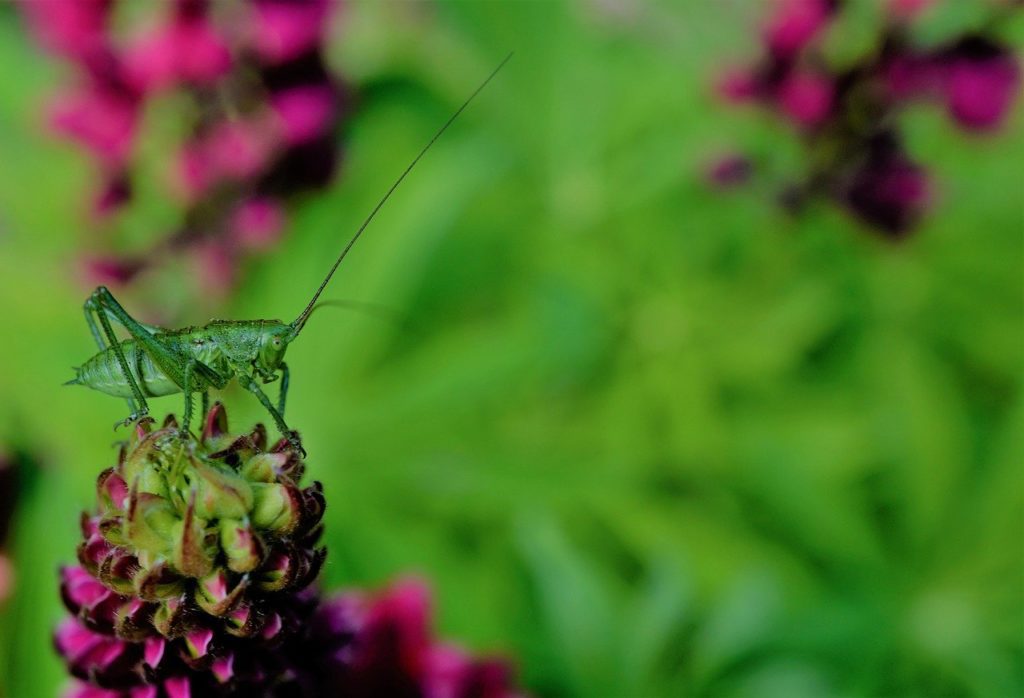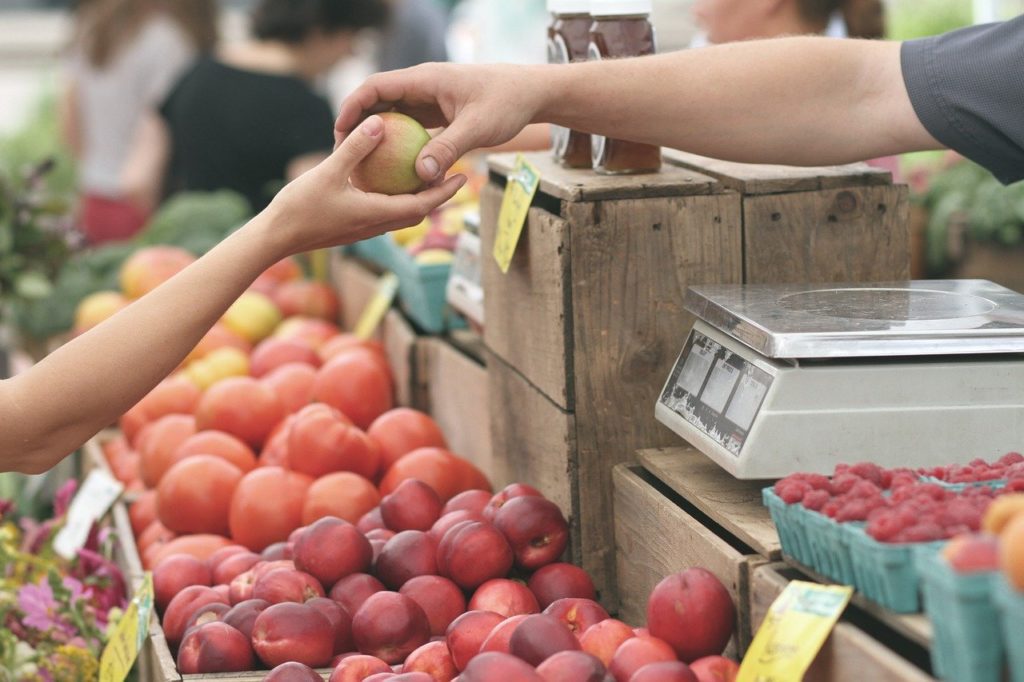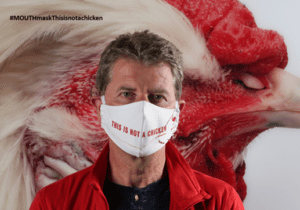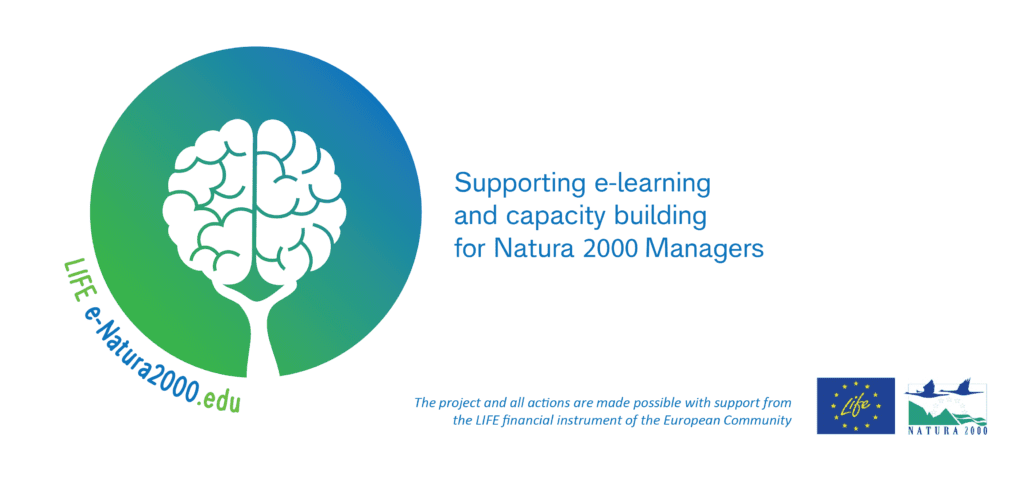Consultations for a new EUROPARC Federation Strategy
Moving forward – consultations for a new EUROPARC Federation Strategy
Our strategy is the mechanism through which we implement our mission and vision, ensuring the work of the Federation is valuable to our members. It provides a framework of what EUROPARC as an organisation wants to achieve so we can plan effectively and ensure adequate support to the work for Protected Areas in Europe.
2021 will be the final year of our current strategy which we started in 2015 after extensive consultation with our members.
EUROPARC is a member’s association. You, the members are vital to shape and prioritise how and what the organisation delivers. Your opinion is important to us. Your contribution, with concrete inputs from the field, will feed into our new Strategy. We want to hear from you, to make sure our efforts and energy go directly into areas prioritised by you, this is why we started online consultations for a new EUROPARC Federation Strategy, open until the 7th of August.
Access the questionnaire here:
English, French, Italian, German, Spanish
The consultation process:
In order to guarantee broad participation, there are a number of opportunities to ensure you can share ideas, thoughts, needs, expectations and proposals.
- The Strategy Consultation is a wide process, started already in 2019 with some initial online sounding questions. Results were shared and discussed during our General Assembly in Latvia.
- We are now launching an online questionnaire, available in different languages: English, French, German, Italian and Spanish. Please take the time to fill this out. It should take around 20 minutes and will help us take into consideration what your organisation needs from EUROPARC and how we can best provide support. Note that we are looking for one answer per member. An email was sent to the contact person of each organisation with the link to fill in the questionnaire. Please answer the questionnaire by the 17th of July. Note that the questionnaire is to be filled exclusively by EUROPARC members, and the membership number will be asked. If you haven’t received the email, have any questions, or indeed, need to know your Member id, please drop us an email to members.europarc@europarc.org.
- In parallel with the online questionnaire, we are currently running a number of online consultation workshops, organised with the support of our Sections. Workshops are being held in the first language of the section hosting. A great opportunity to share your views and ideas for the future of our organisation. See the full calendar of online workshops and find the one that suits you best:
| Section | Date |
| Low Countries | 20th of May |
| Central and Eastern Europe | 22nd May |
| France | 26th of May |
| Nordic-Baltic | 9th of June |
| Atlantic Isles | 16th of June |
| Spain | 22th of June |
| Italy | 23rd of July, |
| Germany | 10th of July |
| Open session for Non-Section members (in English) | 26th of June |
Access the questionnaire here:
English, French, Italian, German, Spanish
What happens next?
- Over summer we will start elaborating the data collected via the online survey and during the course of the consultation workshops;
- In September a specific workshop will take place with Council Members, Section Representatives and Directorate to analyse data, discuss further inputs and start prioritising main areas of work;
- In October at the General Assembly, first outcomes of the consultation will be shared.
- In March 2021 a first draft of the new strategy will be prepared and then circulated for review across the network.
- A final version will then be produced and sent out to members, to be voted on at the General Assembly 2021.
- The new strategy will then enter into force in January 2022.
The input of our members is of great importance to us. We thank you in advance for taking the time to contribute to our new strategy and we look forward to hearing your recommendations!
Protected Areas are essential for new EU Strategies
In the framework of the EU Green Deal, on the 20th of May, the European Commission proposed two key policy documents for the future of Europe : the Biodiversity Strategy 2030 and the Farm to Fork Strategy.
EUROPARC Federation has closely followed the policy-process, ensuring the voice of Protected Areas within the EU institutions has been heard. The EUROPARC Federation believes our members, are key actors to ensure the full implementation of these strategies.
What are the European Commission’s responses to the current global challenges regarding biodiversity loss and unsustainable food value chain?
As part of the EU Green Deal, the Biodiversity and the Farm to Fork strategies, must be complementary and project themselves towards the same horizon. Indeed, the realisation that our food value chain is not sustainable and that biological diversity is disappearing at a breakneck speed, illustrates the necessity to create a coherent policy framework. It is essential to underline the complementarity of both strategies that came out together on the 20th of May.
Protected Areas are thus key actors, with a more integrated approach to land management, in promoting this new European horizon, being
- Key actors to implement EU policy in the field
&
- Key beneficiaries of EU Policies, Programs and actions.
The Biodiversity Strategy: Bringing back nature into our lives
The Biodiversity Strategy for 2030 recognises the multiple benefits of biodiversity for society and, more broadly, for life on earth. This aspect is reinforced in light of the COVID19 crisis: this pandemic has provided an opportunity to demonstrate the links between ecosystem health and human health. EUROPARC under lined this link, in a letter to the European Union.
Taking into account the 5 main drivers of biodiversity loss described by IPBES, the Biodiversity Strategy bases its approach by addressing these drivers.
Concerning Protected Areas, in particular, the N2000 network, the European Commission observes that the:
protection has been incomplete, restoration has been small-scale, and the implementation and enforcement of legislation has been insufficient. (Biodiversity Strategy, p.4)
Among the objectives of the Biodiversity Strategy, the European Commission wants to “improve and widen our network of Protected Areas and develop an ambitious EU Nature Restoration Plan.” (Biodiversity Strategy, p.4)
For managers of Protected Areas and the Natura 2000 network, these are the key messages of the policy document regarding NATURE PROTECTION :
- Build a coherent Trans-Europe Nature Network.
- Legally protect a minimum of 30% of the EU’s land areas and 30% of the EU sea area and integrate ecological corridors. (It means an extra of 4% of land and 19% for seas areas as compared to today)
- 10% of EU land and 10% of EU sea should be under strictly Protected Areas. (Today, only 3% of land and less than 1% of marine areas are under strict protection.)
- As part of this strict Protected Areas network, it is highlighted the necessity of protect all the EU’s remaining primary and old-growth forests.
Member States will be in charge of designating the new Protected Areas and strictly Protected Areas; they will define conservation objectives and measures for all Protected Areas. Here, EUROPARC Federation and its members should have a key role to play to provide our expertise to our own Member State in order to ensure a participative and representative process.
EUROPARC members have a privileged view on the situation, putting policy into practise and sharing that knowledge with policy-makers.
For instance, for many years, we developed and fostered the Transboundary Programme to build partnership across boundaries. This expertise developed during these initiatives is then crucial for the realisation of the objectives of the Biodiversity Strategy. Effective partnerships and participation is the key to ensure a proper implementation on the field.

For managers of Protected Areas and the Natura 2000 network, these are the key messages of the policy document regarding NATURE RESTORATION:
– Legally binding EU nature restoration targets will be proposed in 2021. It will be subject to an impact assessment.
– Policy coherence with the Common Agricultural Policy and the Farm to Fork Strategy :
- Reduce by 50% the overall use of – and risk from – chemical pesticide by 2030 and reduce by 50% the use of more hazardous pesticide by 2030
- To bring back at least 10% of agricultural areas under high-diversity landscape features (with buffer strip, rotational or non-rotational fallow land, hedge, non-productive trees, terrace wall and ponds.)
- 25% of the EU’s agricultural land must be organic farm by 2030
– An objective to increase the quantity, quality and resilience of the forest of Europe :
- A Forest strategy by 2021 with the objective to plant at least 3 billion additional trees in the EU by 2030.
- Development of the Forest Information System for Europe
– Restoring the good environmental status of marine ecosystem :
- Marine resources must be harvested sustainably and zero-tolerance for illegal practices
- A new action plan to conserve fisheries resources and protect marine ecosystem will be proposed by 2021
- To tackle by-catch of species
- Fisheries-management measures must be established in all marine protected areas
– Restoring Freshwater ecosystems:
- 25 000 km of free-flowing rivers must be restored
– Greening urban and peri-urban areas:
- Cities with at least 20 000 inhabitant will have an ambitious Urban Greening Planning
- EU Urban Greening Platform
– Reduce Pollution & Addressing invasive alien species:
- Reduction of use of fertiliser by at least 20%
- A new EU strategy on Zero pollution Action plan for Air, Water and Soil
- A EU invasive Alien Species Regulation
Overall the Biodiversity Strategy seeks to improve the health of existing and new Protected Areas.
EUROPARC Federation welcomes this step towards recognition of the value of Protected Areas as a key delivery mechanism for the strategy. EUROPARC will continue to strengthen our network to share best-practices to ensure the effectiveness of the Biodiversity and Farm to Fork Strategies.
EUROPARC will contribute to support the work of Protected Areas, to harmonize and improve their management in order to collectively recover and restore the conservation of Nature in Europe.
To ensure the effectiveness of the strategies, the European Commission propose a new European biodiversity governance framework “to help map obligations and commitments and set out a roadmap to guide their implementation”. In addition, the role diplomacy of European Union to become a global leader in nature conservation is a key element of the Biodiversity Strategy 2030.
Farm to Fork : for a fair, healthy and environmentally-friendly food system

As part of the EU Green Deal, the Farm to Fork Strategy seeks to rethink the whole food value chain in order to improve its sustainability at each step : from production to consumption. The Strategy addresses the Green Deal’s vision on several issue :
- ensure sustainable food production, stimulate food processing (seeking industry’s commitment for responsible and transparent business),
- promote sustainable food consumption facilitating the shift toward healthy and sustainable diets,
- reduce food loss and waste,
- combate food fraud, and promote a global transition to sustainable food system (favouring international cooperation, including ambitious sustainable food related provisions in all relevant EU bilateral agreements and build green alliances with non-EU countries).
The Farm to Fork Strategy (F2F) has a general objective with a transversal vision : promoting eco-friendly practices (development of organic farming, animal welfare, reduce dependency on pesticide, shift consumption toward healthy diet…) by seizing the opportunities that offer new technologies and scientific discoveries.
One of the objective of the Farm To Fork Strategy is to “Ensure that the food chain has a neutral or positive environmental impact, preserving and restoring the land, freshwater and sea-based resources on which the food system depends; helping to mitigate climate change and adapting to its impacts; protecting land, soil, water, air, plant and animal health and welfare; and reversing the loss of biodiversity.” (F2F, p.5)
Why the Farm to Fork Strategy is important for Protected Areas?
The EUROPARC Federation, believes that what is good for biodiversity is also good for people. Protected Areas could play a role at the production stage of the food value chain. Indeed, the dichotomic vision between agriculture and biodiversity conservation has to be removed to think about the win-win relationship between these two sectors being absolutely possible.
There are 2 major points regarding Protected Areas and Food Production of the Farm to Fork Strategy :
- the link between agriculture and biodiversity is essential as they have a co-beneficial relationship
Protected areas and Natura2000 are laboratories for experimentation for initiatives stemming from the Farm to Fork strategy because they manage everyday with biodiversity and economic activities inside and nearby its borders. Agriculture and biodiversity are very closely linked and co-beneficial. Protected Areas can contribute to reduce the environmental and climate footprint of EU Food system and strengthen its resilience.
- that agriculture in Protected Areas can be a good indicator of sustainable agriculture and health food production, and also contributes to rural development.
Sustainable agriculture in Protected Areas is a key to achieve the objectives of the Farm to Fork strategy: by providing “fair, healthy and environmentally-friendly” products. It could also dynamize the local food value chain and open new opportunities for employment.
For many years, EUROPARC Federation has advocated for the recognition of the work of Protected Areas in their implementation of EU policies.
Thus, after years of dialogue and cooperation with the European Union, we very much welcome this ambitious Biodiversity Strategy for 2030. We anticipate too, a more constructive relationship between Protected Areas and food production arising from the Farm to Fork Strategy. We celebrate the commitment of EU to tackle the biodiversity crisis. EUROPARC Federation remain ready to collaborate with the European Institutions, offering expertise and experience, to support the implementation of the Strategy and to provide inputs for the development of the dedicated Action Plan.
STAY TUNED ! EUROPARC Federation will publish more articles with a deeper analysis and recommendations on both strategies !
This is not a chicken! – A Call out for nature and human rights
“This is Not a Chicken!” is a movement created by Artist Koen Vanmechelen, ecologist and EUROPARC President Ignace Schops, and human rights expert Manfred Nowak.
The mouth mask campaign “This is not a chicken”
By protecting others, we defend ourselves!
The consequences of how we treated “the others” is slamming us in the face. Mass breeding, overproduction, … for many, money was the only thriving element. Over the years we learned about the dangers of “spillover”, viruses that spillover from animals to humans … and over time we had to lockdown animals (pigs, cows … ) and several times we were forced to organise a lockdown for chickens (chicken flu, …). But did we care? Did we see what was happening; did we listen to the voice of nature …? We were so convinced the human race was unbeatable… And now, suddenly, we need to lockdown ourselves! Are we becoming chickens ourselves…?
By protecting others, we defend ourselves is the central mantra of the project. By being careful stewards of nature, we will care for ourselves. The chicken, as the most domesticated animal, apart from the human-animal, has shown us that disregarding the mantra leads to commodification and destruction.
As the most domesticated species, humans can learn from that and choose not to be a chicken.
Trough a newly designed face mask by a world-famous artist, they invite people to become pioneers of a post-corona recovery and healing process that focusses on the well-being of the other(s), both human and non-human animals, nature & culture. “We need to restore the balance!”
When art, nature and human rights come together
An artist, an ecologist and a human rights expert join forces with a mouth mask “this is not a chicken”! Koen Vanmechelen, a world-famous artist (ART), Ignace Schops, ecologist, president EUROPARC Federation and Ashoka fellow (NATURE) and Manfred Nowak, Secretary-general Campus Human rights (HUMAN RIGHTS) call to join the movement, wear your MOUTH mask and make a statement.
Essential for a post-corona world is to restore a balance for all who make up the living organism called Earth. Only then will healthy co-existence be possible for all.

The words of Ignace Schops, founder of the mouth mask campaign “This is not a chicken”
“The current crisis calls into question the system itself. The silent collapse of nature, makes us lose our comfort zone. Healthy natural ecosystems are self-regulating systems full of life and provide us with the essential basics of existence. We urgently need to rediscover the unique position of Nature’s design as the existential and sustainable basis for our society. We cannot keep on destroying what keeps us alive. We need to understand our position as a species in the great All. Nature has the solution. Nature must become a Human Right.”
Ignace Schops, Ashoka fellow & President EUROPARC Federation
THIS IS NOT A CHICKEN_statements
The MOUTH Mask project is coordinated by the Mouth Foundation, who supports the distribution of comfort masks to more vulnerable groups at home and abroad. A first 10,000 masks are donated to our social projects. From the LABIOMISTA farm in Belgium to the farms in Zimbabwe, Ethiopia and the US, and from the communities in Chile to Malawi. For every mask we sell, we can also donate an additional mask to one of our community projects. Through and thanks to our people, we will set a strong example to protect the other(s) and position Nature as a Human Right.
Discover the story behind the MOUTH Mask on mouthmask.be
[webinar] What can Natura 2000 teach us?
- Friday, 29th of May 2020
- 11:00 CEST
- participation is free but registration is needed. Register here.
What can Natura 2000 teach us?
The EU Nature Directives and Natura 2000 represent important advances in effective, evidence-based, and collaborative conservation. Both success and failures associated with Natura 2000 provide important lessons for nature conservation policy, planning and management. Scientific research plays an important role in the implementation and assessment of progress related to Natura 2000 and the Directives.
In this webinar, we synthesize the main experiences of the Nature Directives and Natura 2000 with a particular focus on the role of scientific research.
Cases studies are used to highlight the critical roles of research, collaboration and communication in implementation of the Directives.
Read more about Natura 2000 within the EUROPARC network.
REGISTER HERE
